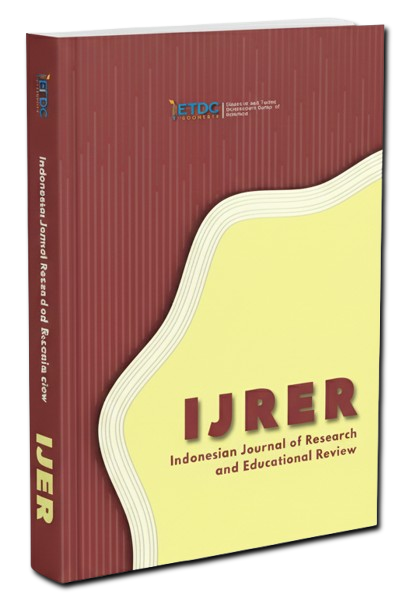Leadership Style of the Head of Religious Affairs Office in Fostering Employee Discipline: An Islamic Education Perspective
https://doi.org/10.51574/ijrer.v3i2.2701
Keywords:
Leadership style Employee discipline Democratic leadership Exemplary leadership Workforce developmentAbstract
This study explores the methods used by the Head of the Office of Religious Affairs in Wawo Subdistrict to foster employee discipline through an Islamic Religious Education perspective. Employing a qualitative, descriptive field study approach, data was collected through interviews, observations, and documentation. The analysis utilized deductive reasoning, moving from general findings to specific conclusions. The results indicate that the head’s leadership style is predominantly democratic, tailored to the existing situational and organizational conditions. Discipline is nurtured through a family-oriented approach, with employees actively involved in various training programs aimed at enhancing their skills and service quality. Key factors influencing employee discipline include the provision of appropriate compensation, implementation of warnings, and exemplary leadership behavior. Leadership by example emerges as a vital element in fostering discipline, enabling the creation of a professional, responsible workforce capable of serving the community effectively. This study highlights the significant role of leadership styles and strategies in building a disciplined and competent team within the context of the Office of Religious Affairs, offering practical insights for leadership development in similar institutions.
References
al-Ghazali, A. (2001). Ihya' Ulum al-Din (Revival of the Religious Sciences). Dar al-Ma'arifah.
Bandura, A. (1977). Social Learning Theory. Prentice-Hall.
Bass, B. M., & Avolio, B. J. (1994). Improving Organizational Effectiveness through Transformational Leadership. Sage Publications.
Bogdan, R.C., & Taylor, S.J. (2018). Introduction to Qualitative Research Methods: A Phenomenological Approach to the Social Sciences. Wiley.
Gibson, J.L., Ivancevich, J.M., & Donnelly, J.H. (1996). Organizations: Behavior, Structure, Processes. McGraw-Hill.
Herzberg, F. (1959). The Motivation to Work. John Wiley & Sons.
Handoko, T.H. (1999). Manajemen Personalia dan Sumber Daya Manusia. BPFE.
Hersey, P., & Blanchard, K. H. (1982). Management of Organizational Behavior: Utilizing Human Resources (6th ed.). Prentice-Hall.
Maslow, A. H. (1943). A Theory of Human Motivation. Psychological Review, 50(4), 370–396.
Miles, M.B., & Huberman, A.M. (1994). Qualitative Data Analysis: An Expanded Sourcebook. Sage Publications.
Moleong, L. J. (2018). Metodologi Penelitian Office of Religious Affairs litatif. Bandung: PT Remaja Rosdakarya.
Skinner, B. F. (1953). Science and Human Behavior. Free Press.
Sugiyono. (2015). Metode Penelitian Pendidikan Pendekatan Office of Religious Affairs ntitatif, Office of Religious Affairs litatif, dan R&D. Alfabeta.
Sutrisno, E., & Sunarsi, D. (2014). Manajemen Sumber Daya Manusia. Kencana.
Vroom, V. H. (1964). Work and Motivation. John Wiley & Sons.


























